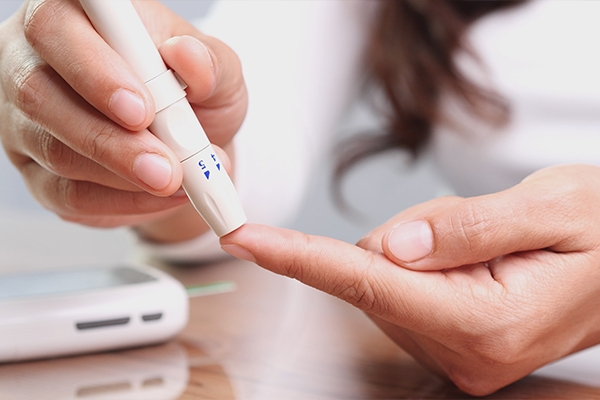Is It True That Walking After Eating Reduces The Risk of Diabetes?

Walking, even for a short time, can have a positive impact.
What do you do after eating? Chatting while sitting around relaxing or lying down because you feel sleepy and full? Feeling tired after eating, while not harmful, can interfere with activities and reduce concentration.
One of the causes of drowsiness after eating is an increase in blood glucose levels. This increase is the body's natural response to meals, so there is no need to worry unless blood glucose levels rise too high.
To overcome this spike, walking can be one of the activities of choice after eating.
In addition to being easy to do, walking has many health benefits, such as helping weight management, improving mood, controlling blood pressure, and reducing the risk of diabetes.
A study published in the Journal of Sports Medicine revealed that engaging in a brief two to five-minute walk after a meal can help lower blood sugar levels. The study concluded that the optimal time to walk is 30 to 90 minutes after a meal when blood sugar levels are at their peak.
Walking also helps keep insulin levels stable. It can be started about 15 minutes after eating to help your body remove sugar from your bloodstream. Muscles need blood glucose to function, so moving can help lower blood sugar levels.
This is also why many runners rely on carbs before a marathon or race. Proponents of post-meal walking suggest starting with a 10-minute walk and gradually increasing the duration.
Limiting your walk to around 10 minutes allows you to enjoy the benefits without experiencing side effects, such as an upset stomach. Plus, this length makes it easy to fit in walking throughout the day without disrupting your schedule. By taking three 10-minute daily walks, you can easily add 30 minutes of daily physical activity.
How to manage blood glucose

Managing blood glucose is an essential step in lowering your risk of diabetes and reducing your chances of other health complications, such as vision loss, heart attack, stroke, and kidney disease. For people with diabetes, keeping your blood glucose levels in check throughout the day can also improve your energy and general health.
To maintain stable blood sugar levels, consuming a healthy diet with plenty of fruits and vegetables, maintaining a healthy weight, and exercising routine is critical. Here are some ways to balance your blood sugar levels besides taking a 90-minute walk after eating:
1. Plan your meals and snacks
If you eat a meal or snack that contains carbohydrates, pair it with protein and healthy fats. Protein and fat are digested more slowly and increase feelings of fullness than carbohydrates, helping to keep blood sugar levels stable.
2. Include complex carbohydrates in each meal
Nutrient-dense sources of carbohydrates from high-fiber foods can help improve blood sugar control. Complex carbohydrates, such as whole grains, vegetables, and fruits, take longer to digest and provide a slower release of energy (glucose) into the bloodstream than refined carbohydrates.
3. Limit the amount of added sugars
Beware of sugary drinks, baked foods, and products with added sweeteners, such as condiments and fruit-flavored yogurts, which can spike blood sugar quickly.
What if you have diabetes?

If you have diabetes, your blood sugar levels usually peak between 60 and 120 minutes after eating. Therefore, it is recommended that you begin moving within 30 minutes of eating. Knowing your blood glucose levels is vital in managing your diabetes, so checking your blood sugar routine is essential.
Target blood glucose levels for adults with diabetes are usually:
- From 80 to 130 mg/dL before meals.
- Less than 180 mg/dL one to two hours after meals.
Walking after meals can help stabilize blood sugar and insulin levels, making it easier to reach target ranges. Even if you don’t have diabetes, walking after meals can still be beneficial for reducing blood sugar spikes.
Regarding the intensity and duration of the exercise session, the researchers noted that current guidelines for people with type 2 diabetes recommend 45 minutes of exercise at any intensity to improve post-meal glucose management.
Please don't overdo it
While walking is great for your health, please don't overdo it. Experts recommend walking after meals to help manage blood glucose levels, but there's no need to replace it with strenuous activity, such as jogging. Strenuous exercise can strain the digestive system, potentially leading to cramps and other pain.
If you have questions about maintaining blood sugar levels, click WhatsApp or visit GWS Medika Clinic, a health clinic in Jakarta.



